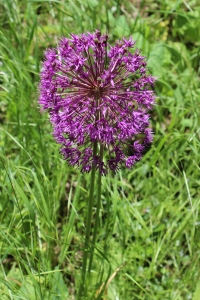This past Sunday, I was talking with a young mom. She has a vivacious, energetic, on-the-go toddler with a strong personality. Yet, he is a generally loving child. He was playing with a cousin who is an infant: sitting up, but not yet mobile. Her son walked over and put his heel next to the infant’s hand and slowly, deliberately stepped on his cousin’s hand.
She was beside herself trying to figure out what would make her child do something like this and honestly, so was I. She told me the story and from the time I have spent with her son, I just couldn’t understand. It took some time to process it and figure out how I would have handled it.
First of all, I would have snatched him away from the infant. No doubt there, right? Tell him, “No! We don’t do that. We don’t hurt people!” Then I would have tried to figure out what was going on. Kids don’t usually act outside of their normal behavior patterns without a reason. I think I have figured it out.
This toddler is smart. He is right about 24 months or so. He already knows all of his letters. He isn’t reading yet, but he knows his letters and can point them out. He knows his colors (ok, aubergine and puce might not be on his radar yet, but the biggies are definitely recognized). He is also a very curious child. He thinks outside of the box… and I believe he was experimenting. I believe he wanted to find out what would be the result of his actions. Perhaps he was wondering if it hurt?
My advice to be loving and logical: ask him why he did it. If he cannot articulate, ask him if he was curious. Ask him if he wondered if it would hurt. Be nonjudgmental. If he was curious, offer to help him figure it out. Have him put his hand flat on the floor. Put your heel next to his hand, “is this what you did to your cousin?” Then very gently and slowly (absolutely do not stomp. Do Not crush his hand. Just apply pressure), bring your toes towards the floor until he yelps, says “ow,” or his eyes bug out. At that point, immediately remove your foot and get down on the floor with him. Rub his little fingers. Kiss them. Ask him if it hurt. When he says it did, you have your moment.
“Do you think it hurt your baby cousin when you did this to him?” Wait for him to respond. When he thinks about it and says, “yes,” you can proceed gently.
“Do you like being hurt?” Wait for the response of “no.”
“Do you think your cousin likes to be hurt?” “No”
“We don’t want to hurt people, do we?” “No.”
“So let’s not step on people’s fingers or toes or any other body part anymore, ok?”
“ok.”
“If you do this again, the consequences will be…. (fill in the blank with what works for your child)”
If it happens again, ask “do you remember what I said would happen if you did this again?” And then follow through on the stated consequence.
I had a pretty mellow little man. This would have worked with him and is how I usually handled things. When he wanted to go outside barefoot when it was 40* out there, I let him. He was back inside pretty quickly and we never had that argument again. Logical consequences. It also taught him that Mom just might know more than he did. Today, he is a loving, caring young man. Even on the football field, after a rough play, I have seen him pat the shoulder of someone feeling frustrated. Of course, the sarcastic sense of humor balances everything out, so he doesn’t look too soft!
When our children are so very little, we have a wonderful opportunity to help them get in the habit of thinking through to the consequences of their actions. It takes longer in the short terms, but the long term benefits are many. As the parents, we have to get behind their actions to the reason for those actions. We have to stop just reacting to what we see. Stop treating the symptoms and search for the cause. Are they tired or hungry or feeling neglected? Do they need lap or nap time? Do they think that the only time they get our attention is when they misbehave? Are they jealous or frustrated? Can we break things down to their level for them so they can see? I think the little man in this post could grasp on a very basic level that what he did hurt his cousin and understand that it would hurt the next time… and that next time there would be consequences.
We need to get to their hearts and minds. We need to teach them not just how to respond to our reactions, but to think ahead to the possible consequences of their own actions all by themselves. Does my teenager always do this? Nope. But I think he probably does so more than most of his friends and since he still has the safety net of home, I am pretty happy with that.































